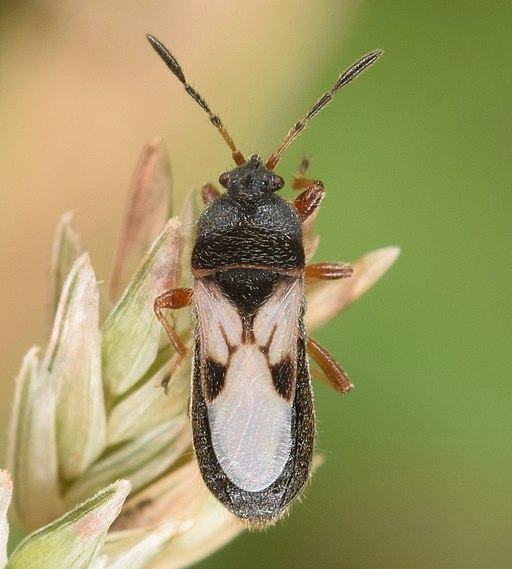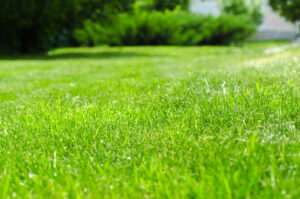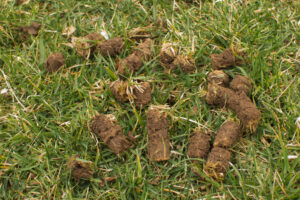
Chinch bugs are small insects that have earned a big reputation in Alberta (and it’s not for good reasons!).
They have become well known, particularly in Calgary and surrounding areas, due to their destructive feeding habits, which can damage grass. Chinch bugs are common pests in Alberta and can be found in lawns and golf courses. Chinch bug infestations have been reported in various parts of Alberta, including Calgary, Edmonton, Airdrie, Chestermere and other urban and rural areas.
The most common species of chinch bugs found in Alberta is the hairy chinch bug. This species has adapted to our cooler climate and is capable of surviving harsh winters by seeking shelter in protected areas such as leaf litter or in cracks and crevices around buildings.
Chinch bugs feed by sucking plant fluids from grass blades, primarily targeting the lower stem and crown region. They use their sharp mouthparts to puncture the plant tissues and extract sap, which can lead to yellowing, wilting, and eventually the death of affected grass. Damaged areas may appear as irregular patches of dead or dying grass, and the damage is often more severe during hot and dry periods.
Chinch bugs also poison your grass as they are eating it. “The toxin prevents the grass from absorbing water from then on out so it’s not only actively dehydrated now, but it doesn’t have any way of absorbing water either which makes it entirely die.” (Source: Planet Natural)
IDENTIFYING CHINCH BUGS
“Chinch bugs are black with a white spot on their back between their wing pads. Adult chinch bugs have white wings folded over their backs, and are 4 mm (.16 inches) in length. The immature chinch bug (the nymph) is bright red with distinctive white bands across the back. As it matures, its colouring will change from orange to brown, and finally black. Nymphs do not have wings.” (Source: Government of Canada)
Chinch bugs prefer heat and their populations become more active as the weather warms.
According to Planet Natural, “Adult chinch bugs overwinter in dry grasses and other debris that offer them protection. Therefore, damage occurs most frequently during hot, dry weather from June through September. There are usually 2 overlapping generations each year.”
“In spring or early summer, the insects mate and females start to deposit eggs on the leaves and stems of grass.”
“One female can lay as many as 500 eggs. These eggs hatch in 1-3 weeks into nymphs, which feed voraciously and pass through 5 instars before becoming adults.”
SIGNS YOU HAVE CHINCH BUGS IN YOUR LAWN
There are a few signs that can indicate the presence of chinch bugs in your lawn. Following are some common indicators to look out for:
Patchy yellowing or browning areas
- Chinch bugs feed on grass by sucking out the plant juices, which can cause patches of grass to turn yellow or brown. These damaged areas may appear irregular in shape and may spread over time.
Source: Shutterstock. This is an image of a damaged lawn, due to pests.
Wilting or drought-like symptoms
- Infested grass may show signs of wilting, even when adequately watered. The affected areas may appear dry and lack vigor.
Irregular feeding patterns
- Chinch bugs tend to feed in groups, resulting in distinctive irregular feeding patterns on the grass. You may notice a transition zone between damaged and healthy areas.
Presence of chinch bugs
- Conduct a visual inspection to check for the presence of chinch bugs. Look for small insects (about 4 to 6 millimeters in length) with black bodies and white wings folded over their backs. They can typically be found in the thatch layer or near the base of the grass blades.
Damage along sunny areas
- Chinch bugs are more active in sunny areas of the lawn, so the damage is often more pronounced in these locations. Pay close attention to areas that receive full sunlight.
Offensive Odor
- “Chinch bugs give off an offensive odour when crushed. If your lawn has a noticeable odour when walked on, you could have a large infestation.” (Source: Government of Canada)
If you suspect chinch bug activity based on these signs, then:
- Do a visual test. “Spread the grass and check the soil surface for red nymphs or black adult chinch bugs. These bugs avoid the light and may hide in soil crevices.” (Source: Government of Canada)
- Perform a simple test called the “flotation method” to further confirm their presence. Cut out both ends of a metal can (such as a coffee can), push one end about 2 to 3 inches into the ground at the edge of the damaged area, and fill it with water. After about 5 to 10 minutes, chinch bugs will float to the surface if they are present. “Healthy turf should be able to tolerate a level of two or three bugs per can. However, turf that is in poor condition or stressed by hot, dry weather may not tolerate even a low-level infestation.” (Source: Government of Canada)
It is important to note that other lawn issues, such as drought stress, nutrient deficiencies, or disease, can cause similar symptoms. If you’re unsure, please feel free to contact our office in Calgary or Red Deer and our team will be able to help you with proper identification and recommend appropriate treatments if needed. You can learn more about our insect control services here.
HOW TO TREAT YOUR LAWN FOR CHINCH BUGS
If you suspect chinch bugs in your lawn or garden, we can help. Contact our office in Calgary or Red Deer and one of our team will be able to help you. They can provide guidance on identification, monitoring, and appropriate control measures to manage chinch bug populations effectively.
Here are some steps you can take if you suspect you have chinch bugs in your lawn:
Step 1
First step is to accurately identify chinch bugs and confirm their presence before applying any treatment.
Step 2
Identify the infested areas.
Carefully inspect your lawn and identify the areas that show signs of chinch bug activity.
Step 3
Determine a treatment plan and focus your treatment efforts on those specific areas.
Some recommend trying soapy water.
If chinch bug populations are extensive and causing significant damage, you may need to consider insecticide treatment. Insecticides can be used as a last resort if chinch bug populations are extensive and causing significant damage.
Consult with a professional lawn care service to determine the most appropriate insecticide and application method for your specific situation.
TIPS TO PREVENT CHINCH BUG INFESTATIONS
Prevention is key when it comes to managing chinch bugs. By implementing good lawn care practices, such as proper watering and mowing techniques, you can create an environment that is less favorable for chinch bug infestations and promote a healthier, more resilient lawn.

In order to prevent chinch bug infestations, it is important to maintain proper lawn care practices such as:
Regular and proper watering
- Ensure your lawn receives adequate moisture, especially during dry periods. Chinch bugs are more likely to thrive in drought-stressed grass.
Mowing at the correct height
- Maintain your lawn at the appropriate height for the specific grass species you have. Longer grass provides more shade and can help reduce chinch bug activity.
Avoid over-fertilization
- Over-fertilizing will encourage greater insect activity.
Aerate lawn in the spring
- Chinch bugs like compacted soil. Aerating your lawn makes it less appealing to them. Learn more about our aerating service here.

Thatch management
- Regularly dethatch your lawn to minimize thatch buildup, as chinch bugs often prefer to reside in thick thatch layers.
It’s not a cinch to deal with chinch, but if you need help, be sure to contact our team of lawn care professionals in Calgary or Red Deer and they will be able to help.
For more tips on how to get rid of chinch bugs, visit the Government of Canada website here.
Sources:
Planet Natural, Chinch Bug Control
CTV News Calgary, Chinch bugs return to Calgary lawns this spring with a vengeance
Government of Canada, Pest Control Tips, Chinch Bugs


Recent Comments